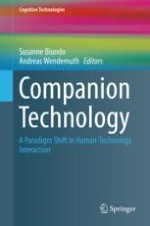2017 | OriginalPaper | Chapter
20. Emotion Recognition from Speech
Authors : Andreas Wendemuth, Bogdan Vlasenko, Ingo Siegert, Ronald Böck, Friedhelm Schwenker, Günther Palm
Published in: Companion Technology
Publisher: Springer International Publishing
Activate our intelligent search to find suitable subject content or patents.
Select sections of text to find matching patents with Artificial Intelligence. powered by
Select sections of text to find additional relevant content using AI-assisted search. powered by
